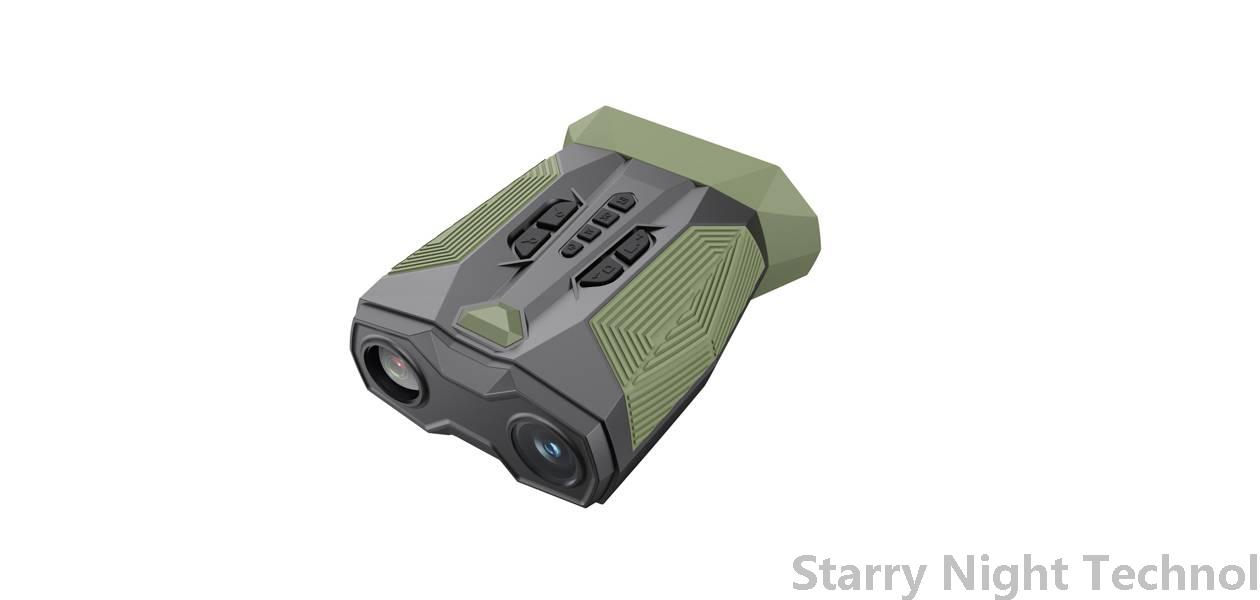Innovations in Night Vision Technology and Their Impact on Aerospace Industry
1757919620000

The quest for improved visibility under low-light conditions has long been a driving force in both military operations and civilian applications. Night vision technology has evolved significantly over the years, responding to increasing demands from several sectors including security, aviation, and aerospace. In particular, advancements in night vision technologies are reshaping the landscape of the aerospace industry, with implications ranging from enhanced flight safety to new operational capabilities.
#### Historical Context of Night Vision Technology
Night vision technology initially emerged during WWII when it was primarily utilized by militaries for reconnaissance missions. Early systems involved infrared components, allowing troops to detect heat signatures from enemy personnel and equipment. As technology progressed, image intensification (I2) systems became mainstream in the 1950s, using electronic amplification to enhance light from stars or moonlight, making nighttime operations feasible. Transitioning into the late 20th century, advances in micro-electronics spurred the development of more compact, efficient devices that could be used not only in combat but across various industries.
#### Recent Innovations: From Gen III to Digital and Beyond
The latest iterations of night vision technology have seen revolutionary changes due to digital imaging and sensor technology. Traditionally, night vision systems were categorized into generations — from Generation I, which relied heavily on analog systems, to Generation III, which provided higher resolution images through gallium arsenide photocathodes. Recently, there has been a significant shift towards Digital Night Vision (DNV). This next-generation system leverages advanced processors, enhanced algorithms, and smart sensors capable of processing real-time data.
Additionally, the integration of multispectral imaging has gained momentum. Multispectral sensors capture information across multiple wavelengths of light—visible, thermal, and near-infrared—and synthesize this information to create comprehensive images. Such innovations facilitate better detection of objects, even those camouflaged, thus enhancing situational awareness for pilots navigating at night or in adverse weather conditions.
Artificial Intelligence (AI) is now also playing an important role in improving night vision systems. Utilizing machine learning algorithms can intelligently analyze visual data, identifying threats and enhancing target recognition far quicker than human operators could achieve alone. The combination of AI with DNV frameworks raises expectations for aircraft performance by automating processes and reducing cognitive loads on pilots.
 The aerospace sector stands poised to benefit immensely from these advancements in night vision technology. One substantial area of impact lies in flight safety. Enhanced night vision allows pilots to traverse low-visibility environments, promoting safer landings and takeoffs in darkness or inclement weather. High-definition imagery ensures that critical factors such as runway alignment, ground obstacles, and surrounding traffic are readily identifiable.
The aerospace sector stands poised to benefit immensely from these advancements in night vision technology. One substantial area of impact lies in flight safety. Enhanced night vision allows pilots to traverse low-visibility environments, promoting safer landings and takeoffs in darkness or inclement weather. High-definition imagery ensures that critical factors such as runway alignment, ground obstacles, and surrounding traffic are readily identifiable.Moreover, cargo flights and military operations involving helicopters and drones require reliable navigation in total darkness. Incorporating sophisticated night vision solutions can result in successful mission completion, thereby yielding timely logistics support while ensuring troop safety during nocturnal excursions. Furthermore, commercial airlines may utilize these technologies in search-and-rescue or medical evacuation missions, amplifying their operational scope.
Enhanced visualization via updated night vision systems could also transform training methodologies within the aerospace field. Flight simulators integrated with realistic night vision capabilities allow trainees to develop essential skills without relying solely on daylight scenarios. To maintain proficiency in varying environmental conditions, accurate replication of nighttime flying in simulations enhances readiness for real-world challenges.
#### Future Advancements: Quantum Dots and Beyond
Looking forward, the horizons of night vision technology appear promising. Research into quantum dot technology aims to yield even sharper imaging capabilities with reduced size and weight of integrated systems. These up-and-coming materials promise improved performance metrics and energy efficiency, epitomizing the drive toward miniaturization and portability inherent in modern aerospace designs.
Furthermore, ongoing research in photonic materials and superconductors focuses on creating ultra-sensitive detectors capable of capturing faint light signals. If successful, these laboratory breakthroughs could pave the way for efficient night vision systems that operate unobtrusively and provide unmatched clarity, fundamentally altering air travel's reliability and security landscape.
#### Conclusion
The evolving nature of night vision technology represents a crucial cornerstone for advancing the aerospace industry. With its potential to enhance flight safety, operational consistency, and adaptability in diverse lighting conditions, embracing continuous innovation becomes imperative. As the aerospace community navigates future challenges—be they related to defense, transport efficiency, or emergency services—the evolution of night vision systems will undeniably play a profound role in shaping solutions that meet the rigorous demands of tomorrow’s aerial ventures. Technological advancements will not just redefine how we perceive the dark, but underscore humanity’s resolve to navigate all terrains, day or night, unveiling possibilities previously obscured by shadows.
What to buy for night vision device accessoriesStarry Night Technol

